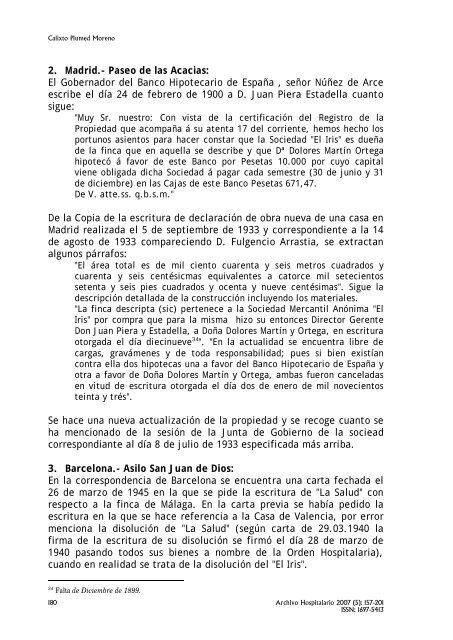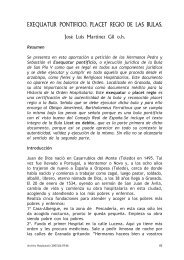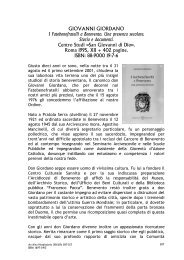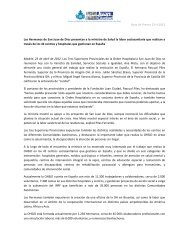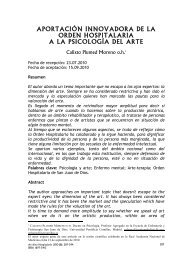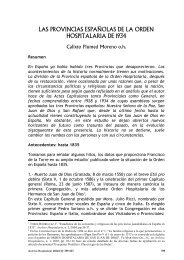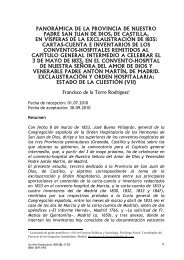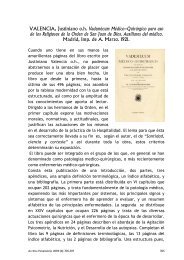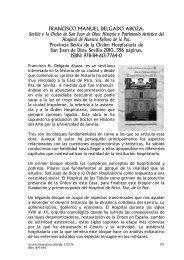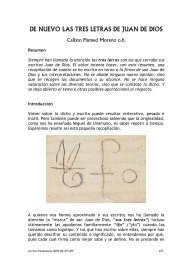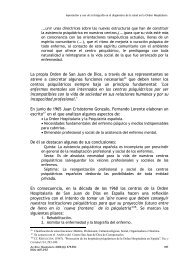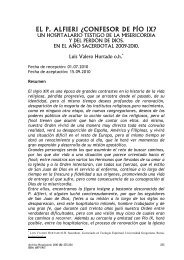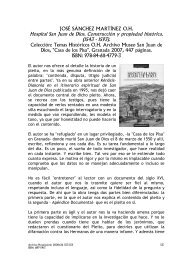Parte 2 - Inicio - San Juan de Dios
Parte 2 - Inicio - San Juan de Dios
Parte 2 - Inicio - San Juan de Dios
You also want an ePaper? Increase the reach of your titles
YUMPU automatically turns print PDFs into web optimized ePapers that Google loves.
Uncle Will read aloud a telegram which had just come from Senator Peter Norbeck tomy father, telling him that he un<strong>de</strong>rstood he was pretty sick, but that he must hang on awhile longer, as South Dakota could not spare him just then--in the critical days ofdrought and <strong>de</strong>pression, in which my father's encouragement had, on previousoccasions, been so valuable to the pioneers. Uncle Will and my father then turned to adiscussion of the "virtues of the buffalo grass; how it cured on the stalk in the fall; andthat the oil it contained nourished stock all through a Dakota winter, so that they wouldcome in fat in the spring."My sister had received a Bulletin from the US Department of Agriculture, and I readaloud a statement re the buffalo grass:Buffalo Grass (Buchloe dactyloi<strong>de</strong>s) is the dominant grass in short grassregions. It grows on uplands and may be heavily grazed by stock. Buffalo grassis palatable and nutritious to all classes of livestock. It will stand extremes ofdrought and very heavy grazing. Buffalo grass cures in the fall and makes good,nutritious winter forage. It spreads by vigorous runners, though it needssurface moisture for the stolons, or runners to <strong>de</strong>velop roots. Its seedproduction is light, except in favorable seasons.My father and Uncle Will agreed that this account of the great buffalo grass accor<strong>de</strong>dwith their findings, based on more than 60 years of observation. Uncle Will asked me ifthe bulletin told anything about the "blue-joint," which, in seasons of sufficient rainfall,grew higher than an Indian pony's head. I found an account un<strong>de</strong>r the name of "BigBluestem (Andropogon furcatus)," which <strong>de</strong>scribed the Dakota grass called "Bluejoint."The bulletin stated:Big bluestem is the dominant native perennial grass in the bottom land type ofpasture. Originally big bluestem was the principal grass in the richer prairies ofEastern Dakota, now all un<strong>de</strong>r cultivation.Big bluestem is very palatable and nutritious in its earlier stages of growth andthe protein content is about 14 percent. In September, when the cru<strong>de</strong> fibrehas increased, and the grass has matured, the fibre is about 33 1/3 percent.Big bluestem is a sod grass, spreading by root stocks which greatly add to itsability to withstand grazing, and to its value as a pasture plant. The fact that itdoes not joint and mature seed until late summer makes it especially valuablefor supply forage during the summer months.


